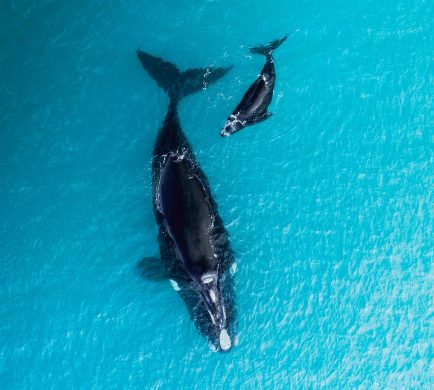Organized Growth and Natural Harmony
In August 1817, the learned men of the Linnaean Society of New England studied their bestiaries, which were ancient and illustrated volumes of all the animals. They set out from Boston for Gloucester’s high rocky shore to survey the seascape. There, they found what they were looking for. The sea serpent was a “60 to 100-foot long, black, shiny, leathery, scaly, reptilian beast with humps, large eyes, and sharp teeth.” Had they heard the local fishermen, the scientists would have dismissed claims that their sea serpent was a school of bluefin tuna.
In 1798, the English economist, cleric, and scholar Thomas Robert Malthus published anonymously that increased food production would improve the population’s well-being. However, with abundance, population growth would be geometric, while the means of subsistence increase would be arithmetic. The standard of living would go down, and people would suffer “the Malthusian trap.” Malthusians believe.
In 1972, the authors of the publication Limits to Growth used computer modeling to predict what would happen with
exponential economic and population growth. Funded by the Volkswagen Foundation, they presented three scenarios. Two of the scenarios saw population “overshoot” and societal collapse. A third scenario resulted in a “stabilized world.”
From Limits to Growth and other publications of the 1970s, many people believe that human numbers will always grow until they reach the limit of subsistence and that overpopulation may only be avoided, to use Malthus’s words, by “vice” (including “the commission of war”), “misery” (including famine or want of food and ill health), and “moral restraint” (i.e., abstinence). Publications informed the way they looked at the world. Fortunately, the intricate relationships for humans as part of nature are not as straightforward as calculations and computer models portend.
For example, cattle were observed deteriorating in a pasture. Consistent with their expectations, the experts proclaimed that this was over-grazing and that the population must be reduced to a sustainable level consistent with what the resource was providing. In a large African elephant park, they found that the carrying capacity for elephants had been exceeded, and the resource base was being destroyed. Over the span of twenty-seven years, they called for the culling of more than 14,000 elephants. Their belief system dictated that many elephants must die for the elephant population to survive.
In both cases, the experts had assessed the situation, prescribed the solution, and left others to manage it. When they returned to find neither the pasture nor the elephant park improved despite the removal of animals, they clung to their science, blamed the managers, wrote off the loss, and carried on.
When he introduced adaptive management, C.S. Hollings (1978) took a very different approach to the certainty of the Malthusians. Hollings et al. identified critical uncertainties regarding ecosystem dynamics and designed diagnostic management experiments to reduce the unknowns. They took the radical step of including all stakeholders in the management deliberations because the greater the diversity of perspectives, the more robust the solutions would be. Having a stake in solving the problem assured effective implementation.
There were outcries from the scientific community in response to Hollings’ ideas. They knew the best practices through extensive research and juried publications. Doing anything different would be less effective and might cause more damage when time is of the essence. In other words, adaptive management is too risky, and management should be left to the scientists who know best.
Nature Adapts, We Should, Too
In central Oregon is Bear Creek. There, 25 cattle were let out to roam freely in June and brought back into the barn in August. Initially, the cattle stayed by the riverside, where it was the coolest, and ate all the tasty plants. Stream banks turned to mud. Scoured by sediments, the river cut deeply into the land. The pasturelands, with less diversity of plants and compacted soils, became arid.
The adaptive management approach was to section the grazing lands with fencing. The cattle were let out to the creek in May to graze on first shoots that included rushes and willows. This saved the rancher money for a month of cattle feed. Cattle thrived on the new growth. They were moved to another pasture well before the resource was overgrazed. Every few weeks, the cattle were moved to higher pastures. Grazing in moderation stimulated plant growth. Cattle fertilized the higher meadow and removed thatch, allowing more wildflowers to grow.
Over the course of 20 years, riparian plants along Bear Creek thrived and spread. The 500,000 gallons of water per mile once held in the land became 4 million gallons per mile. The stream bed rose 2.5 feet. It overflowed its banks and meandered to become one-third of a mile longer. The carbon, nitrogen, and hydrological cycles were restored and strengthened. Grazing cattle had regenerated the land like the buffalo in grasslands long ago.
The same lessons benefited the pachyderms targeted for culling. The improvements when they were moved according to what was best for the land was nothing short of elephantine. People coordinated with elephants to improve ecosystems with more resources for all. African farmers wanted elephants in their fields, stomping fibrous plants, pushing seeds into the ground, and pooping to fertilize the soil. Communities gathered and worked out when and how long the elephants would visit each family’s field. Arid wastelands turned to lush green areas retaining water.
Adaptive management, the integration of cattle or elephants and people, produces a more synergistic balance between the two as active parts of nature. Plants, animals, fungi, bacteria, and microbes that cooperate are more fit for survival and growth than those that compete.
Act for Natural Harmony
By organizing, life overcomes the odds, entropy, and limits to growth. Families organize into populations, populations into communities, and communities into ecosystems. Adaptive management recognizes that ecosystems have vast networks of interconnections, where it is impossible to fully predict what one management action will do. Through experimentation, observations of entire systems (animals, plants, soil, stream flow, etc.), and informed actions, people of the place know the workings of their ecosystems better. What happens on the margins, beneath hooves and elephant feet, or stimulated by grazing, is critical for the turning of cycles and the balance of nature.
To identify uncertainties, recognize the unexpected as they arise, and adopt responsible place-based stewardship practices, we must first see beyond our expectations and not mistake a school of tuna for a sea serpent.
Rather than fret over degraded land at home, work with nature to manage a patch of grass. An established lawn does not need quick-release fertilizer because that will kill beneficial soil microbes. Don’t water because bees do not like it. The grass will then put down deeper roots to open the soil. Set the lawn mower blade to a four-inch height and cut every two or three weeks. This will stimulate the grass to grow (as will walking on the grass). Grasses draw down 3.67 tons of carbon dioxide for every ton of carbohydrates photosynthesized into biomass or pushed into the soil. A natural lawn will build an inch of soil in a year while supporting a surprising level of bee richness and abundance to benefit more flowers, robins, rabbits, and other grazers. A 200-square-foot lawn will draw down and store one ton of carbohydrates in the soil. Even putting a potted plant on a step will help nature draw down more carbon and slow the changing climate for the better and benefit all.
By Dr. Rob Moir







